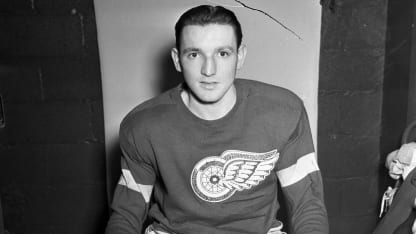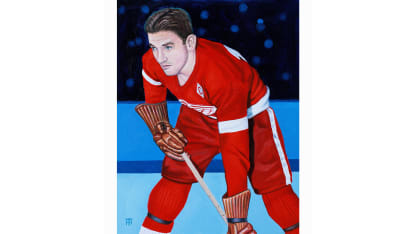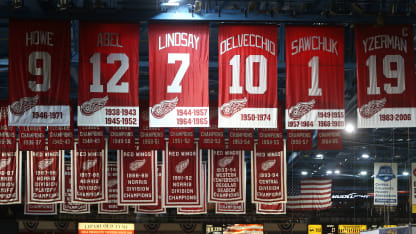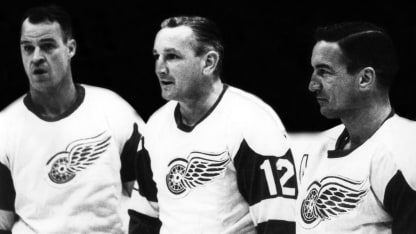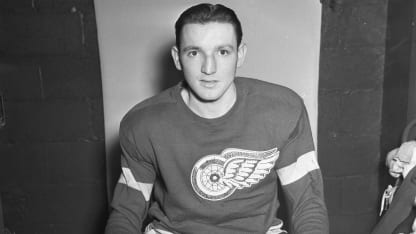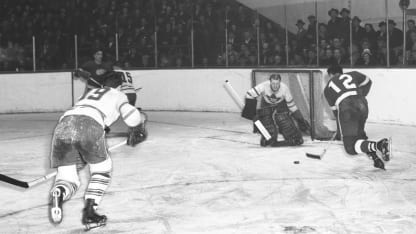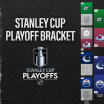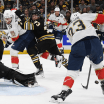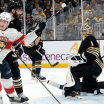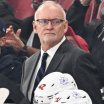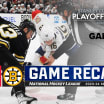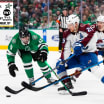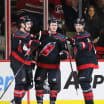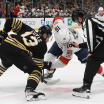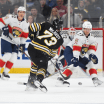Later in 1943, Abel enlisted in the Royal Canadian Air Force, putting his NHL career on hold. Used as a physical training instructor, he remained mostly in Canada during the war and continued playing hockey for military teams. He would not return to the NHL until late in the 1945-46 season and was immediately slowed by injury and illness.
There was concern that Abel's NHL days might have been over. He and other servicemen had returned to a different league. Rule changes that allowed passing into the neutral zone up to the new red line had sped up the game. But Abel, 28 at the time, spent the summer of 1946 getting in better shape, and it paid off: He scored 19 goals and had 29 assists in 1946-47, playing all 60 games and skating mostly between 21-year-old Lindsay and 23-year-old Pete Horeck, with 18-year-old rookie Howe occasionally skating in Horeck's spot.
In the fall of 1947, new coach Tommy Ivan and GM Adams decided to try Howe as the regular right wing with Abel and Lindsay, and things began to click. Lindsay led the League with 33 goals, and Howe doubled his previous output. But the team faltered down the stretch, and Abel slumped in the 1948 postseason. He finished with no goals in 10 games, and the Red Wings were swept by the Maple Leafs in the Cup Final.
To start 1948-49, Ivan relegated the 30-year-old Abel to a depth role, inserting Max McNab in his spot. But after McNab was injured against the New York Rangers in the season's fifth game, Ivan put Abel back between Lindsay and Howe. It took 37 seconds for Abel to break a 2-2 tie with the game-winner, and suddenly there was no stopping him.
Abel scored with regularity and set up his linemates. He reached 20 goals for the first time that season, getting a League-high 28, and kept scoring. Asked about his rejuvenation, he said, "Maybe because I'm slower. Gordie and Ted do all the work. I just come in and pick up the garbage." The "Production Line" had 66 goals, and the Red Wings finished first, beginning a run in which they would win the Prince of Wales Trophy, given to the team with the best regular-season record, a record seven consecutive seasons.
Selected to the NHL First All-Star Team as a center, Abel became the first player in League history to be make a postseason All-Star team at two positions. Most significantly, he won the Hart Trophy as NHL MVP, in a season he had begun as a spare part.
